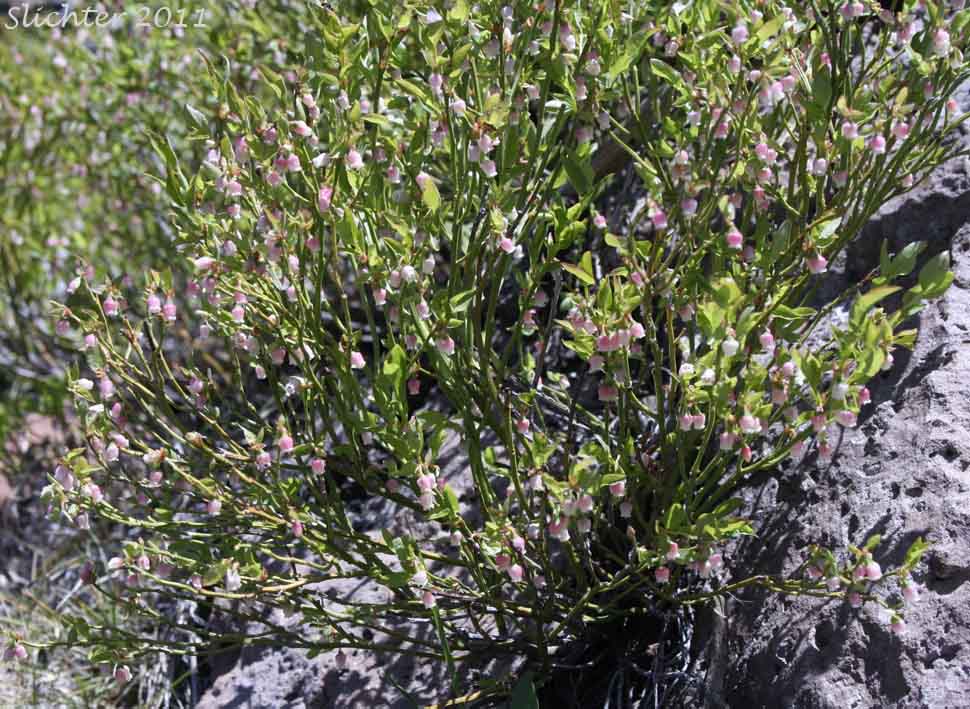
Also known as small-leaved huckleberry grouseberry is a dwarf shrub with many erect, branched branches from 10-40 cm high. The slender branches are green or yellowish-green and sharply angled. They are typically glabrous but may occasionally bear some minute hairs. The stems are largely devoid of leaves, which are mainly found at the tips of the stems. The blades are thin in cross-section and narrowly ovate in shape, measuring 8-16 mm long with minute, fine teeth along the margins. The blades are glabrous or may bear some minute hairs on the leaves (See photo at right.). The lower surface of the blades are conspicuously veiny.
The nodding flowers are solitary in the axils at the tips of the branches. The pedicels are 2-2.5 mm long. The bell-shaped corolla has united petals with the lobes free and spreading. The corolla which is up to 3 mm long is widest near its base and narrows gradually towards the mouth of the corolla. The fruit is a sweet, globose, red berry from 3-5 mm wide.
Grouseberry is found at higher elevations, typically in the shade of coniferous forests in the mountains.
Grouseberry may be found from British Columbia south to northern California and east through Idaho to the Rocky Mts, where it is found southward to Colorado and northward to Alberta. From the Rockies, it t is found eastwards to South Dakota.